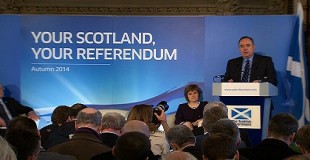Unmarried Women: the Key to the US Elections

On 15 May, the New York Times released a report accusing Donald Trump of dozens of cases of abuse and mistreatment of women. These cases of sexism are only adding to the increased tendencies of women to vote for the Democratic Party in the upcoming election.
Donald Trump’s latest attack against Hillary Clinton accused the Democratic candidate of having been the “enabler” of her husband’s infidelity, for having destroyed the lives of those women who had accused Bill Clinton of harassing them. On the contrary, Trump suggested that he would be the best choice for women because nobody respects and understands them better than he does. Such debates are indicative of the importance female voters have in US politics and they demonstrate the central role women will have in the outcome of the 2016 US presidential elections.
In fact, unmarried women – a category that includes the widowed, the never married, the divorced and the separated – are becoming one of the most important voting demographics in the US. This is a consequence of the practicalities of women’s lives, which are giving rise to several demands of reforms of the US welfare system to better adapt it to women’s needs. In order to advocate for these requests an increasingly higher number of unmarried women are getting involved in US politics through the Democratic Party which in turn is starting to consider their requests in mainstream Democratic conversations.
In 2009, for the first time in American history, less than 50 per cent of American women were married. This phenomenon is having massive social and political implications. It appears that the smaller the number of women that are married, the higher the number getting involved in US politics. It is important to note that these women are not just getting involved in US politics but they are also getting involved in the Democratic Party.
This marked preference for the Democratic Party has given rise to a phenomenon known as “gender gap”. This refers to the proportionate support of women for democratic candidates and the fact that their election turnout is higher than that of their male counterparts. The gender gap was first noticed in 1952 and since then has grown so exponentially that unmarried women, together with people of colour and people under 30, have been labeled by the Voter Participation Center as the Rising American Electorate (RAE).
A study has demonstrated that the reasons behind this gender cleavage is a consequence of the changes in the economic status of women since World War II. Despite women’s increased participation in the American workforce since the 1950s, the horizontal and vertical segregation of American economy prevents them from receiving equal pay. Women are still earning only 78 cents to the dollar compared to men.
This disparity has also been generated by the exclusion of unmarried women from receiving several welfare benefits. This is often because they live outside the institution of marriage, which constitutes the foundation of the US fiscal, living and social system. For instance, preferential tax rates have been established in order to encourage the joint taxation of spouses while working wives and single parents have been assigned higher tax rates. It follows that such a gendered welfare system produces the paradox that unmarried women are denied access to several welfare programs even though they are one of the categories that needs such services the most.
The major consequence of such a gendered system has been the spread of the belief that through increased political participation, changes in gender equality will be secured. To achieve these goals, single women have turned mainly to the Democratic Party. This is because historically it has been the most receptive in building and mandating the kind of social programs needed by women, such as paid family leave. On the contrary, it has been demonstrated that women’s support for Republican candidates has decreased over the years as their agenda has mainly supported the role of the “traditional family” while it has marginalised women.
It seems that unmarried women’s increased political participation is paying off. The more they are becoming involved in US politics, the more the political programs of the Democratic presidential candidates are featuring social programs aimed at closing the gender gap. In fact, while women’s requests some time ago were considered too radical-left to be considered in mainstream politics, in the 2016 elections both Bernie Sanders and Hillary Clinton have included some of these issues in their political agenda. For example, not only did they both dedicate a whole section of their political programs to “women’s issues” but they also explicitly promised to close the pay gap, enhance women’s social security and take further steps to grant social justice to women.
Unmarried women’s role in supporting the Democratic Party already proved fundamental in the 2012 presidential elections. Sixty-seven per cent of women voted for Obama while only 37 per cent voted for Romney, a figure that definitely contributed to the Democrats’ victory. Because of the increased participation between 2012 and 2016, it is expected that women’s support for the Democratic Party will play an even more fundamental role in the 2016 elections. In fact, a national electoral poll carried out in March 2016 by the Democracy Corps National found that while the Democratic presidential candidate Hillary Clinton holds an electoral margin narrower than expected, unmarried women are producing the highest Democratic vote ever. No matter how the presidential elections turn out in November it is undoubtedly true that unmarried women will play a big role.
Francesca Ghezzi is an international student at the University of Canberra and is enrolled in the Bachelor of International Studies and Laws. This article is published under a Creative Commons Licence. It may be republished with attribution.





